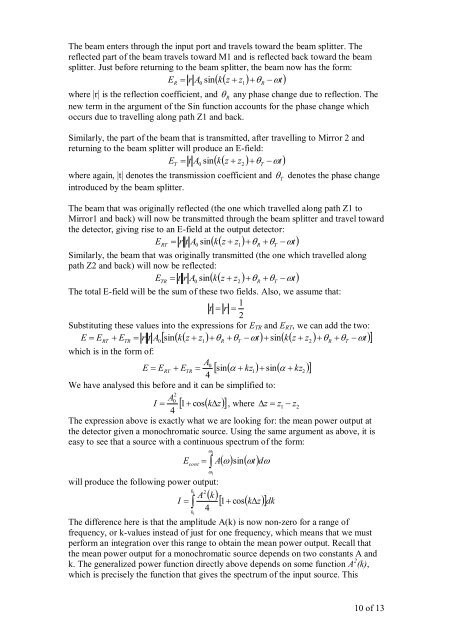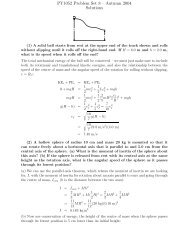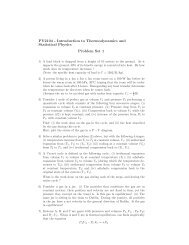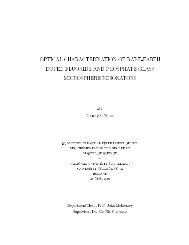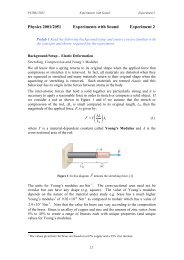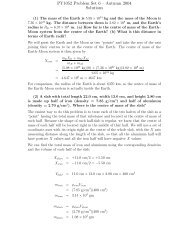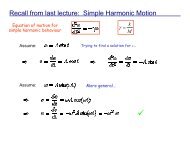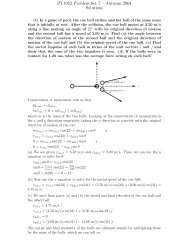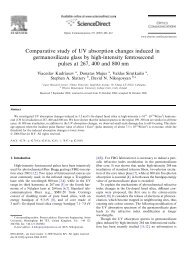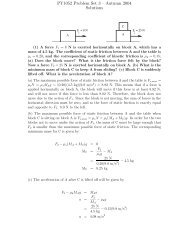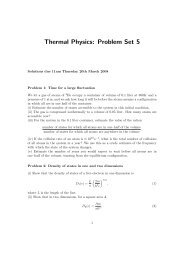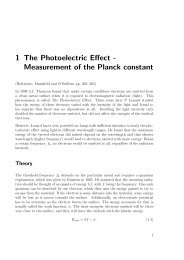Michelson Lab.pdf
Michelson Lab.pdf
Michelson Lab.pdf
- No tags were found...
You also want an ePaper? Increase the reach of your titles
YUMPU automatically turns print PDFs into web optimized ePapers that Google loves.
The beam enters through the input port and travels toward the beam splitter. Thereflected part of the beam travels toward M1 and is reflected back toward the beamsplitter. Just before returning to the beam splitter, the beam now has the form:ER r A sin 0kz z1Rtwhere |r| is the reflection coefficient, and Rany phase change due to reflection. Thenew term in the argument of the Sin function accounts for the phase change whichoccurs due to travelling along path Z1 and back.Similarly, the part of the beam that is transmitted, after travelling to Mirror 2 andreturning to the beam splitter will produce an E-field:ET t A sin 0kz z2Ttwhere again, |t| denotes the transmission coefficient and Tdenotes the phase changeintroduced by the beam splitter.The beam that was originally reflected (the one which travelled along path Z1 toMirror1 and back) will now be transmitted through the beam splitter and travel towardthe detector, giving rise to an E-field at the output detector:ERT r t A sin 0kz z1RTtSimilarly, the beam that was originally transmitted (the one which travelled alongpath Z2 and back) will now be reflected:ETR t r A sin 0kz z2RTtThe total E-field will be the sum of these two fields. Also, we assume that:1t r 2Substituting these values into the expressions for E TR and E RT , we can add the two:E ERT ETR r t A0 sinkz z1RTtsinkz z2RTtwhich is in the form of:A0 E ERT ETR sin kz1sin kz24We have analysed this before and it can be simplified to:2AI 0 1 coskz4, where z z 1 z2The expression above is exactly what we are looking for: the mean power output atthe detector given a monochromatic source. Using the same argument as above, it iseasy to see that a source with a continuous spectrum of the form:E contwill produce the following power output:I kk1112A41Aksintd1cos kzThe difference here is that the amplitude A(k) is now non-zero for a range offrequency, or k-values instead of just for one frequency, which means that we mustperform an integration over this range to obtain the mean power output. Recall thatthe mean power output for a monochromatic source depends on two constants A andk. The generalized power function directly above depends on some function A 2 (k),which is precisely the function that gives the spectrum of the input source. Thisdk10 of 13


